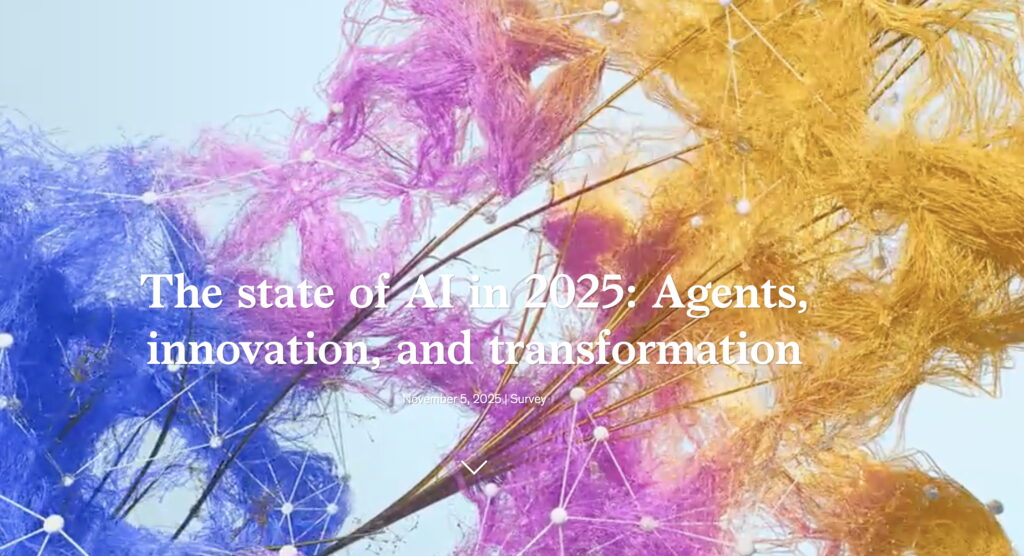
QuantumBlack AI by McKinsey released its new report, “The State of AI in 2025: Agents, Innovation, and Transformation.”
The data serves as a mirror, reflecting a world where AI is now everywhere, and yet, in most organizations, not nearly deep enough to transform them. Nearly all companies are “using AI,” many are flirting with agents, a tiny minority are breaking beyond the status quo, and an even smaller group is quietly exploring new horizons.
Below are the numbers that stood out to me.
Introduction: from experimentation to an AI divide
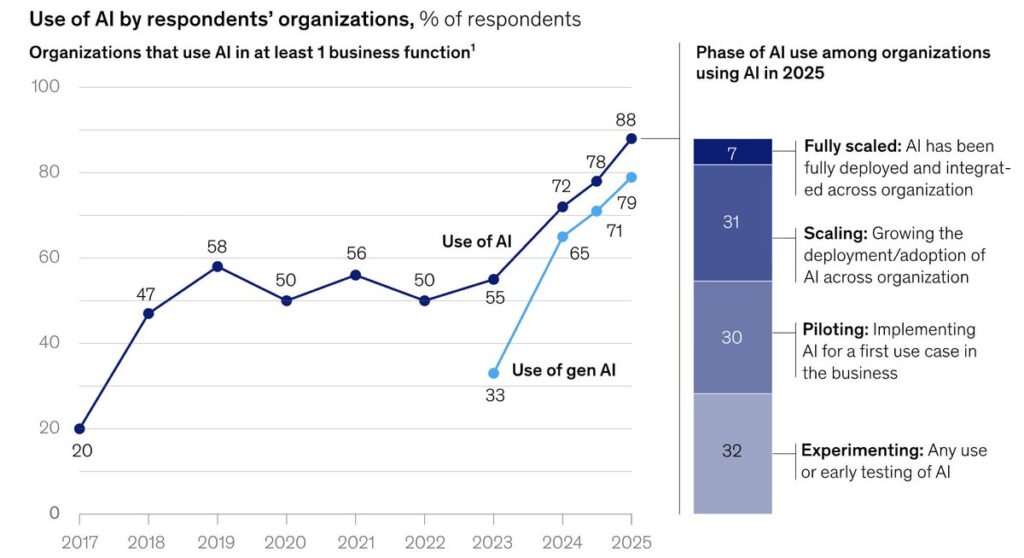
The headline is that 88% of companies now use AI in at least one function (up from 78%). But that was inevitable.
The story I’m paying attention to is the widening separation between:
- organizations that treat AI as tools and pilots, and
- organizations that treat AI as a new operating system for the business.
McKinsey’s data confirms what many of us have been calling out in boardrooms: we’ve entered the agentic era, but most enterprises are still running legacy behaviors, patterns, and processes on next-generation technology. A small set of AI high performers (6%) are doing the opposite. They’re using AI, gen AI, and now agents to redesign workflows, re-architect value creation, and reimagine leadership itself. As result, they see EBIT impact of 5% or more.

While the data tells a story of adoption, I’m looking at the companies writing a story about new identity and capacity.
What these stats are really saying (at a high level)…
1. AI is now table stakes, but impact is optional
88% using AI; 2/3 using it in multiple functions; ~1/2 in 3+ functions. This is ubiquity without guarantee of value. It tells us AI is no longer a differentiator by presence; it’s a differentiator by depth, design, and discipline.

Yet only 39% tie any EBIT impact to AI, and most of that is <5%. Translation: most organizations have sprinkled AI on top of existing processes instead of rewiring how work gets done.

2. Agentic AI has arrived, but is trapped in silos, or corners of the enterprise
23% are scaling agentic AI in at least one function; another 39% are experimenting.
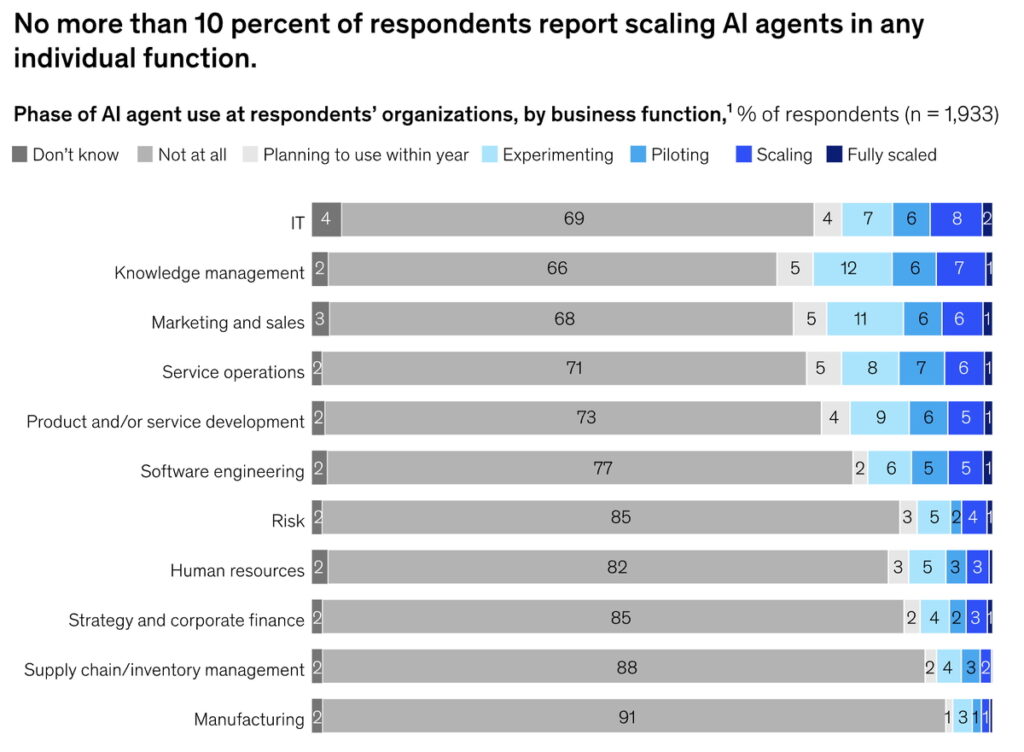
But in any function, only up to 10% say they are truly scaling agents, and usually in just 1–2 functions. Tech, media, telco, and healthcare lead.
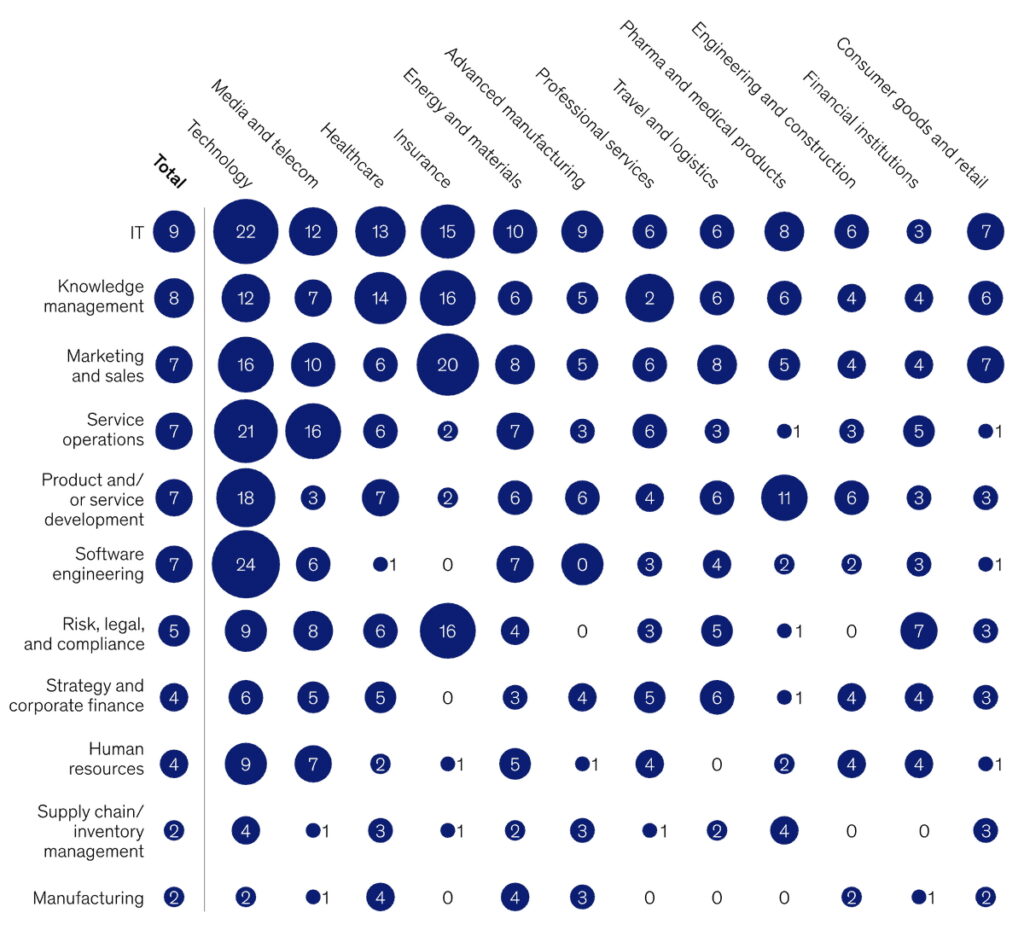
This signals a classic pattern: innovation at the edge, no unifying operating model. Agents are being deployed as bolt-on automation instead of end-to-end flow redesigns.
3. Scale is skewed to the big, and even they are early
Nearly half of companies with >$5B in revenue are in the “scaling” phase, versus 29% of those under $100M.
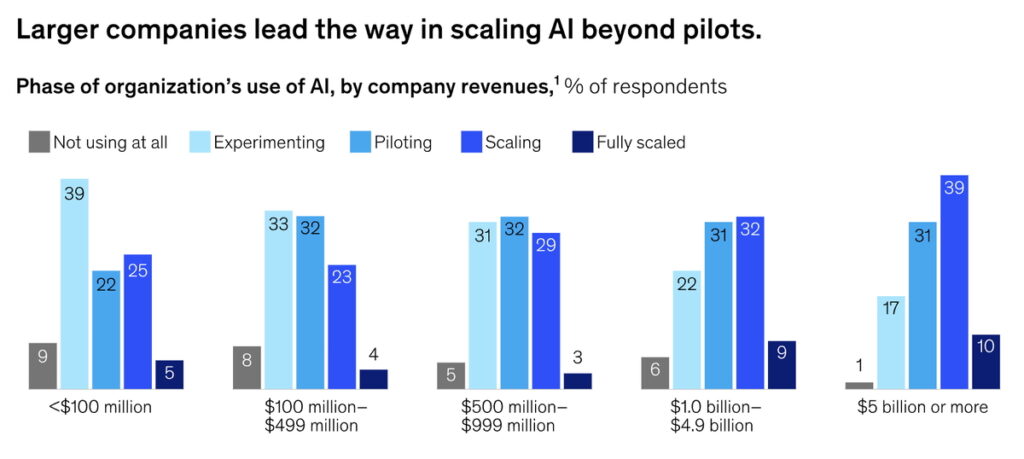
So far, scale favors the resourced. But that advantage is fragile. Smaller firms, if AI-native from the start, can move directly to agentic, automated, and adaptive models instead of dragging decades of technical and cultural debt.
4. The AI paradox: cost-out is easy; transformation is hard
Organizations are seeing point-level cost benefits, especially in software engineering, manufacturing, IT.
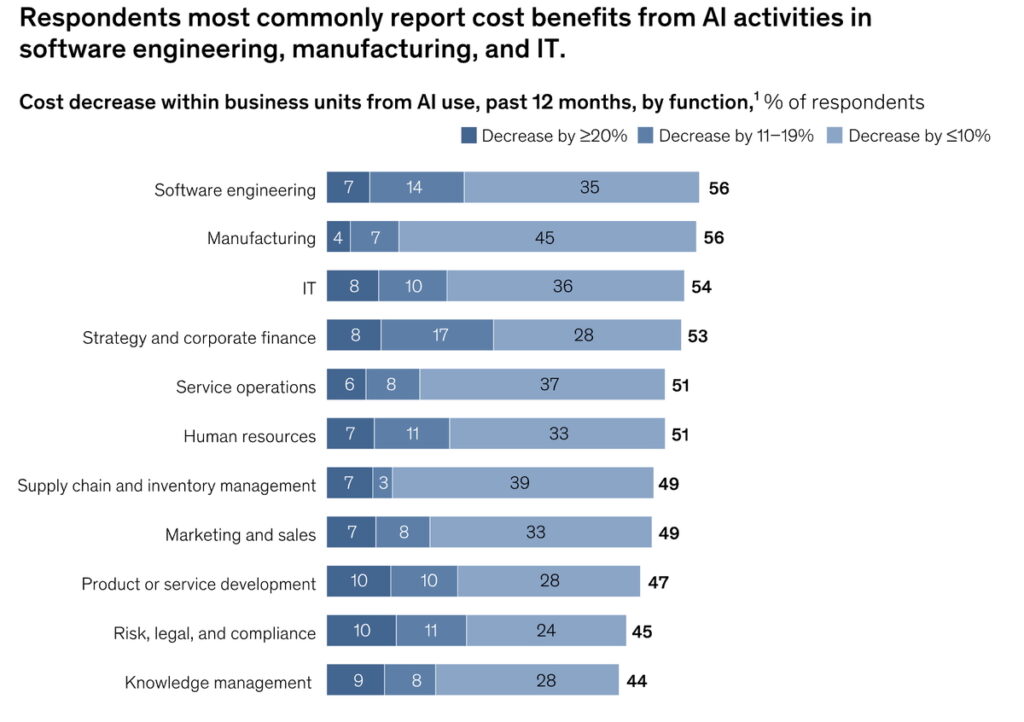
They report revenue and experience gains primarily in marketing & sales, strategy & corporate finance, and product development.
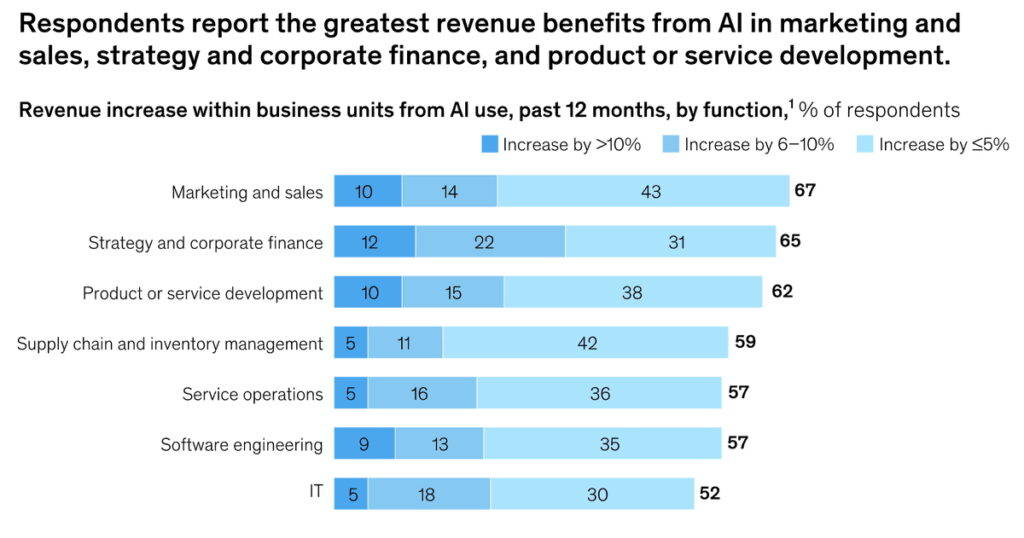
But enterprise-wide bottom-line change is “still rare.” That’s the paradox: lots of motion, little meaning. The companies stuck here think in terms of:
“Where can we add AI?” Instead of: “Where can we reinvent value, experiences, and workflows with AI and agents at the core?”
5. The 6%: what the AI high performers are actually doing
That tiny cohort attributing 5%+ of EBIT to AI is the signal that matters.
Those “AI high performers” consistently:
Redesign workflows, not just tasks. These companies are ~3x more likely to say they’ve fundamentally rebuilt how work flows.

They deploy AI across more functions and are 3x more likely to scale agents across the business.
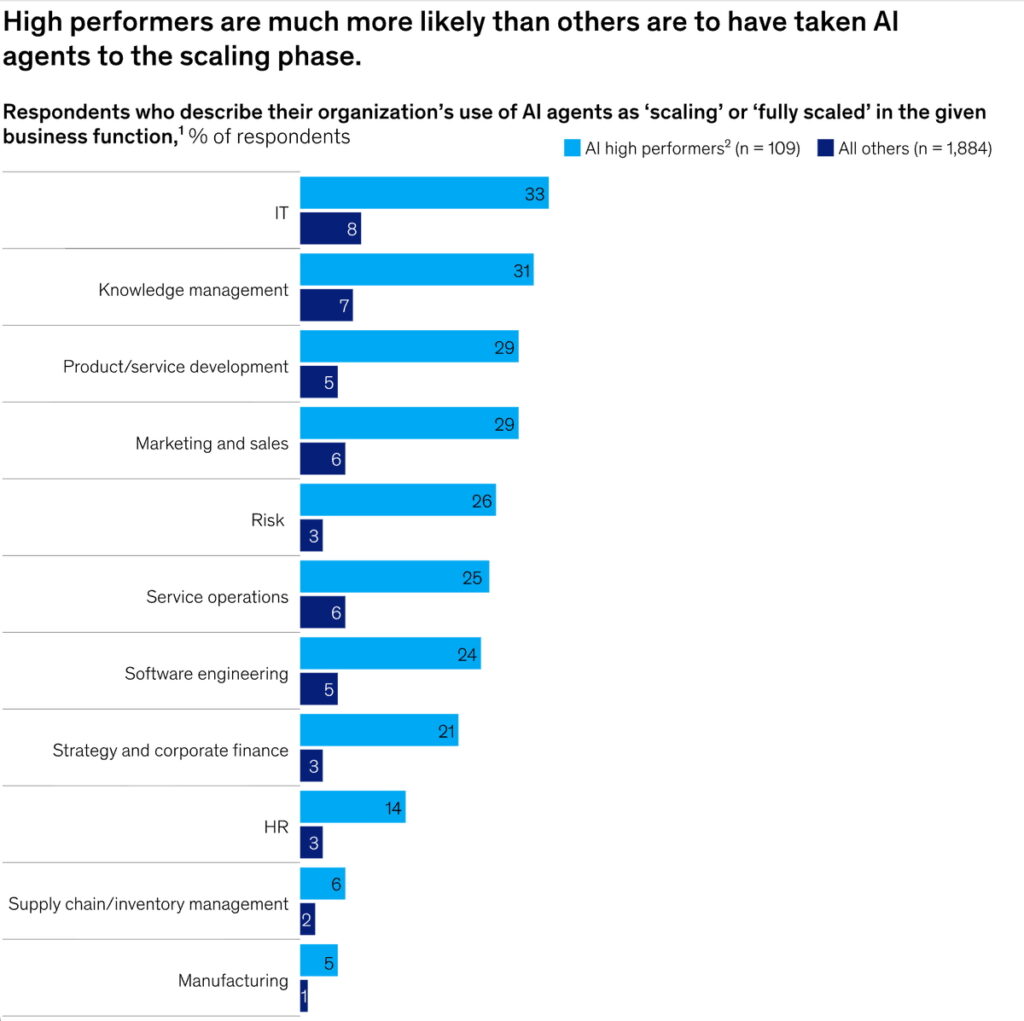
Treat leadership as the real platform: senior leaders sponsor, role model, and own AI initiatives. AI high performers’ use of AI is more often championed by their leaders. High performers are 3x more likely to strongly agree that senior leaders at their organizations demonstrate ownership of and commitment to their AI initiatives.
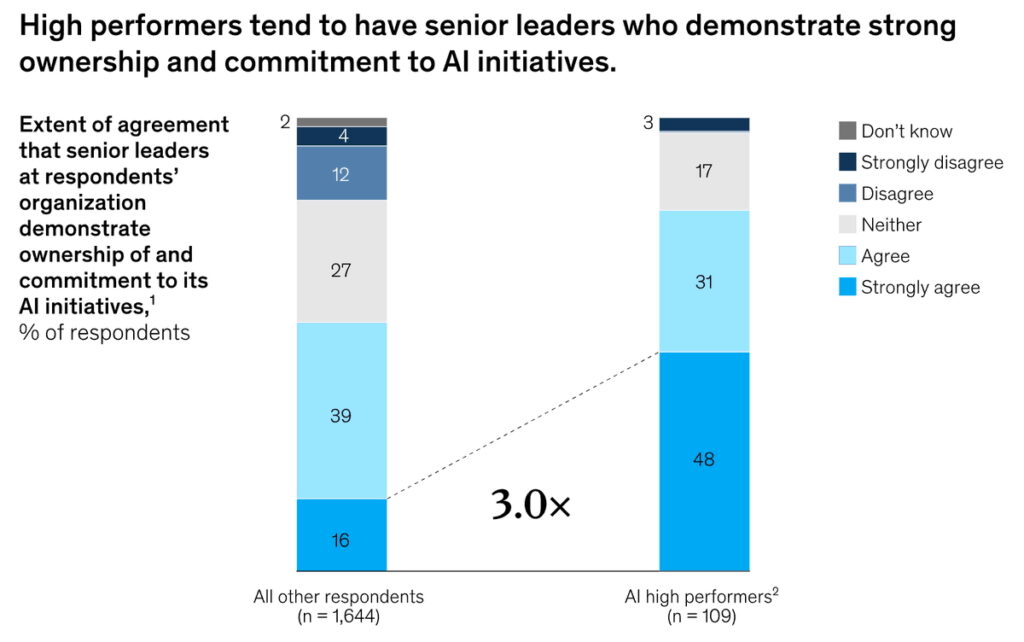
Run a full-stack playbook across 6 dimensions: 1) strategy, 2) talent, 3) operating model, 4) technology, 5) data, and 6) adoption and scaling. The most distinguished high performers employ a full set of management practices, based on more than 200 at-scale AI transformations.
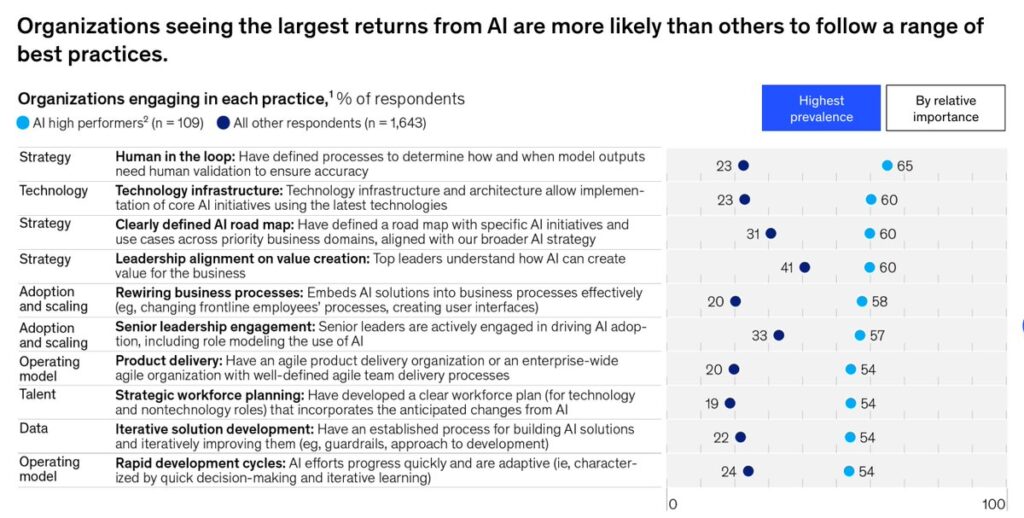
Invest like they mean it: 1/3 of high performers say they are investing >20% of digital budgets into AI; ~3/4 are scaling or have scaled.
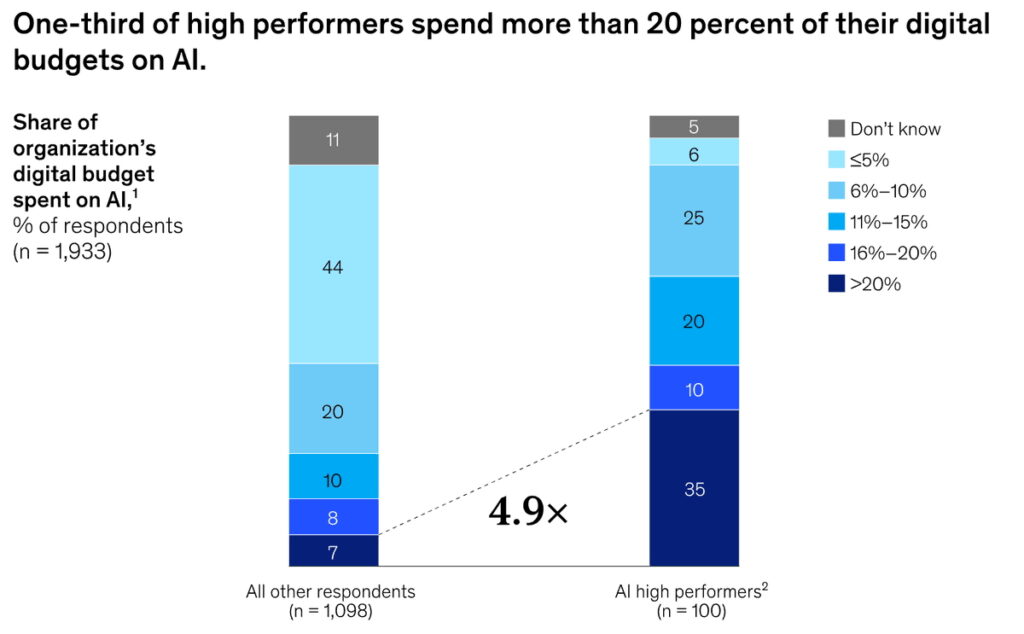
Simply said: they think bigger, move faster, and operate differently.
6. The mindset shift: beyond efficiency theater
Organizations seeing the greatest impact from AI aim to achieve more than cost reductions. While most report that efficiency gains are an objective, high performers are more likely to also set growth and/or innovation as an objective of their AI efforts.
One of the clearest findings: Organizations that set growth + innovation (not just efficiency) as core AI objectives are more likely to see improvements in:
- customer satisfaction
- competitive differentiation
- profitability and revenue growth
- even market share
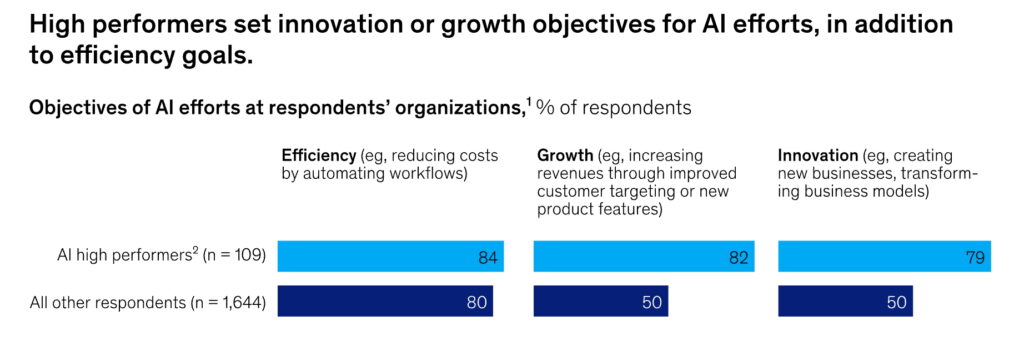
This reinforces a central theme: efficiency is the floor, not the ceiling…meaning it’s not the bar for transformation. Treat AI only as a cost lever and you lock yourself into incrementalism while others build entirely new value chains.
From AI adoption to AI transformation
If you zoom out, this survey could also serve as a mirror that reflects outliers demonstrating curiosity, imagination, leadership, and courage.
Almost everyone has AI. Very few have the will to reimagine their company with it.
On one side we see “AI theater” where scattered pilots, siloed agents, slideware strategies, make no material impact.
On the other side, a small but growing set of agentic enterprises navigating new frontiers where they’re:
- rewiring workflows,
- rebuilding their operating models,
- aligning culture, incentives, and leadership around a different future.
What if we dream bigger. Beyond asking, “How do we use AI to automate yesterday’s work and take out costs, we also ask, “If we started this company today, with AI, agents, and data at the core, how would we design it?”
That is the Mindshift.
This report should not reassure executives that they are “on track” because they have pilots in flight or agents in one function. It should unsettle them. It should make clear that the advantage is compounding in the hands of those 6% that are starting to break away from linear progression.
Assume that…
AI adoption is the next status quo.
Agentic AI is the next realm of exploration and possibility.
Re-architecting business, culture, and leadership becomes a force multiplier
This all sets the stage for cognitive Darwinism, companies that “think different” in how AI unlocks novel enterprise value.
AI or Die!
Read Mindshift | Book Brian as a Speaker | Subscribe





Leave a Reply